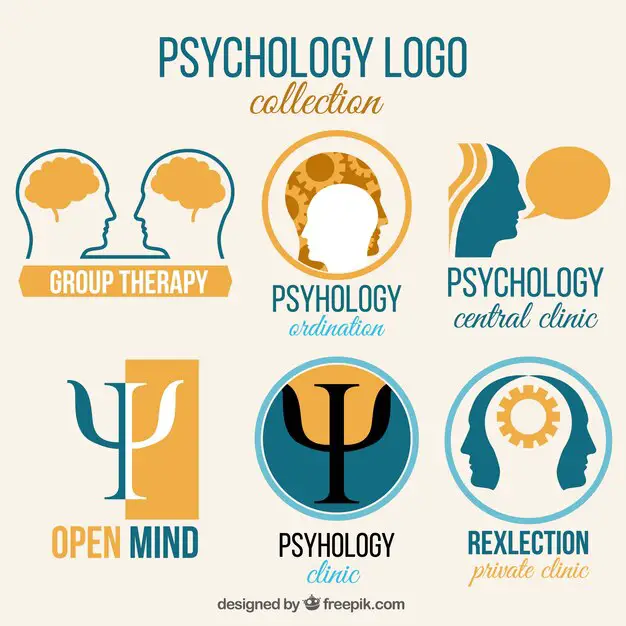An Inquest on Catastrophizing: Cognitive Thought Distortion, Symptoms, and Approaches

Catastrophizing is a cognitive distortion where individuals expect or perceive the worst possible outcome in any given situation, often inflating the perceived severity of an event. This pattern of thinking can lead to heightened anxiety, stress, and avoidance behavior. Understanding and addressing catastrophizing is essential for mental well-being and effective stress management.

Page Contents
- 1 An Inquest on Catastrophizing: Cognitive Thought Distortion, Symptoms, and Approaches
- 2 What is Catastrophizing?
- 3 5 Symptoms of Catastrophizing
- 4 4 Causes of Catastrophizing
- 5 Approaches to Address Catastrophizing
- 6 How CBT and Problem-Solving Skills Address Catastrophizing
- 7 A> Cognitive Behavioral Therapy (CBT):
- 8 B> Problem-Solving Skills:
- 9 Actionable Realistic Perspectives
- 10 Conclusion
An Inquest on Catastrophizing: Cognitive Thought Distortion, Symptoms, and Approaches
What is Catastrophizing?
Catastrophizing involves imagining or anticipating the worst-case scenario, even when evidence suggests otherwise. This cognitive distortion exaggerates the potential negative outcomes of a situation, making challenges seem insurmountable and increasing emotional distress.
5 Symptoms of Catastrophizing
- Excessive Worry: Persistent anxiety about worst-case scenarios that may not be likely.
- Example: Worrying that a minor error at work will lead to being fired.
- Overgeneralization: Applying a negative event to every aspect of life.
- Example: Believing that a single failed attempt at a task means you will always fail.
- Fear of Consequences: Anticipating severe and often unrealistic negative outcomes.
- Example: Expecting that a minor health issue will result in a serious illness.
- Avoidance Behavior: Avoiding situations or decisions due to fear of catastrophic outcomes.
- Example: Avoiding social events because you fear embarrassing yourself.
- Distorted Perception: Viewing situations through a lens of extreme negativity.
- Example: Believing that a disagreement with a friend signifies the end of the relationship.
4 Causes of Catastrophizing
- Past Experiences: Previous traumatic or negative experiences can heighten sensitivity to potential threats.
- Example: Experiencing a serious illness in the past may lead to exaggerated fear of similar health issues.
- Personality Traits: Traits such as perfectionism, anxiety, and high sensitivity can contribute to a tendency to catastrophize.
- Example: A perfectionist may fear failure so intensely that they expect disastrous outcomes from minor mistakes.
- Stress and Anxiety: High levels of stress and anxiety can amplify negative thinking patterns.
- Example: During periods of high stress, individuals may be more prone to imagining worst-case scenarios.
- Cognitive Biases: Biases such as selective attention (focusing on negative information) and confirmation bias (seeking out information that confirms negative beliefs) can reinforce catastrophizing.
- Example: Focusing on negative news stories can increase fear and anxiety about potential disasters.
Approaches to Address Catastrophizing
- Cognitive Behavioral Therapy (CBT):
- Identifying Distorted Thoughts:
- Recognize Patterns: Use thought records to track when and how catastrophizing occurs. Identify specific thoughts that lead to catastrophic thinking.
- Example: Note instances where you feared a worst-case scenario and compare them with actual outcomes.
- Challenging Catastrophic Thoughts:
- Evaluate Evidence: Assess the validity of your catastrophic thoughts by examining evidence for and against them.
- Example: Challenge the belief that a minor work mistake will result in being fired by reviewing past instances where similar mistakes had no severe consequences.
- Reframing Thoughts:
- Adopt Balanced Thinking: Replace extreme thoughts with more balanced, realistic perspectives. Consider a range of possible outcomes rather than focusing solely on the worst case.
- Example: Reframe, “This project will be a disaster” to “This project has challenges, but I can address them and improve.”
- Identifying Distorted Thoughts:
- Mindfulness and Stress Management:
- Practice Mindfulness:
- Stay Present: Use mindfulness techniques to stay grounded in the present moment, reducing the tendency to imagine worst-case scenarios.
- Example: Engage in mindfulness exercises such as deep breathing or meditation to manage anxiety and focus on the present.
- Manage Stress:
- Develop Coping Strategies: Implement stress management techniques such as regular exercise, relaxation techniques, and healthy eating to reduce overall anxiety levels.
- Example: Incorporate daily physical activity and relaxation techniques to manage stress and reduce catastrophic thinking.
- Practice Mindfulness:
- Problem-Solving Skills:
- Develop Practical Solutions:
- Focus on Action: Break down problems into manageable steps and develop practical solutions to address them, rather than focusing on catastrophic outcomes.
- Example: Create a plan to address a challenging situation step-by-step rather than imagining all possible negative outcomes.
- Seek Support:
- Engage with Others: Discuss your concerns with trusted friends, family, or a mental health professional to gain different perspectives and reduce the tendency to catastrophize.
- Example: Share your fears and concerns with a friend who can provide a more balanced view and offer support.
- Develop Practical Solutions:
- Building Resilience:
- Develop Resilience Skills:
- Strengthen Coping Mechanisms: Build resilience by developing coping skills and strategies for dealing with adversity, which can reduce the tendency to catastrophize.
- Example: Engage in activities that build confidence and problem-solving skills, such as volunteering or taking up new challenges.
- Foster Positive Self-Talk:
- Encourage Self-Compassion: Replace self-criticism with supportive and compassionate self-talk to improve your ability to handle challenges.
- Example: Use affirmations like “I am capable of handling difficulties and learning from them” to counteract catastrophic thinking.
- Develop Resilience Skills:
How CBT and Problem-Solving Skills Address Catastrophizing
A> Cognitive Behavioral Therapy (CBT):
- Identifying and Challenging Catastrophic Thoughts:
- Thought Records: In CBT, individuals use thought records to document and examine their catastrophic thoughts. This process helps in identifying patterns of extreme thinking.
- Example: If you think, “If I make a mistake, I’ll lose my job,” you write this thought down and analyze the evidence for and against it.
- Evidence Evaluation: CBT encourages evaluating the validity of catastrophic thoughts by comparing them against actual evidence and past experiences.
- Example: Assess whether past mistakes at work led to job loss or if they were manageable and did not result in severe consequences.
- Thought Records: In CBT, individuals use thought records to document and examine their catastrophic thoughts. This process helps in identifying patterns of extreme thinking.
- Reframing and Cognitive Restructuring:
- Reframing Thoughts: CBT helps in reframing catastrophic thoughts into more balanced perspectives. This involves replacing extreme thoughts with more realistic ones.
- Example: Instead of thinking, “This will be a disaster,” reframe it to, “This is a challenging situation, but I can handle it with preparation and effort.”
- Cognitive Restructuring: This process involves changing negative thought patterns by focusing on more balanced and rational alternatives.
- Example: Challenge the thought that “everything will go wrong” by acknowledging both potential challenges and solutions.
- Reframing Thoughts: CBT helps in reframing catastrophic thoughts into more balanced perspectives. This involves replacing extreme thoughts with more realistic ones.
- Behavioral Experiments:
- Testing Predictions: CBT uses behavioral experiments to test the accuracy of catastrophic predictions. This involves engaging in behaviors that test out extreme predictions and observing the outcomes.
- Example: If you fear failing a presentation, you might give a practice presentation to test whether your catastrophic prediction of failure is accurate.
- Testing Predictions: CBT uses behavioral experiments to test the accuracy of catastrophic predictions. This involves engaging in behaviors that test out extreme predictions and observing the outcomes.
B> Problem-Solving Skills:
- Breaking Down Problems:
- Divide Into Manageable Steps: Problem-solving skills involve breaking down large, overwhelming problems into smaller, manageable tasks. This approach reduces the sense of catastrophe by focusing on actionable steps.
- Example: If you’re anxious about completing a large project, break it into smaller tasks with specific deadlines and focus on completing one task at a time.
- Divide Into Manageable Steps: Problem-solving skills involve breaking down large, overwhelming problems into smaller, manageable tasks. This approach reduces the sense of catastrophe by focusing on actionable steps.
- Developing Practical Solutions:
- Generate Solutions: Problem-solving involves brainstorming possible solutions and evaluating their feasibility. This reduces the focus on catastrophic thinking by emphasizing proactive problem management.
- Example: If you’re worried about an upcoming exam, develop a study plan with specific strategies and resources to address your concerns.
- Generate Solutions: Problem-solving involves brainstorming possible solutions and evaluating their feasibility. This reduces the focus on catastrophic thinking by emphasizing proactive problem management.
- Implementing and Evaluating Solutions:
- Action and Review: Implementing chosen solutions and regularly reviewing their effectiveness helps in managing problems more effectively and reduces feelings of helplessness.
- Example: After implementing a study plan, evaluate its effectiveness and make adjustments as needed, rather than focusing on worst-case scenarios.
- Action and Review: Implementing chosen solutions and regularly reviewing their effectiveness helps in managing problems more effectively and reduces feelings of helplessness.
- Developing Coping Strategies:
- Creating Contingency Plans: Developing contingency plans for potential problems can help mitigate the impact of catastrophic thinking. This involves planning for different scenarios and how to handle them.
- Example: Prepare for potential setbacks by having backup plans or alternative strategies, reducing the impact of worst-case thinking.
- Creating Contingency Plans: Developing contingency plans for potential problems can help mitigate the impact of catastrophic thinking. This involves planning for different scenarios and how to handle them.
Actionable Realistic Perspectives
CBT and problem-solving skills are effective approaches for addressing catastrophizing. CBT focuses on identifying, challenging, and reframing catastrophic thoughts, while problem-solving skills involve breaking down problems, generating practical solutions, and implementing and evaluating strategies. Together, these approaches help individuals shift from extreme thinking patterns to more balanced, actionable, and realistic perspectives, reducing anxiety and enhancing overall problem management.
Conclusion
Catastrophizing is a cognitive distortion that can significantly impact mental health by amplifying anxiety and stress. Understanding its symptoms, causes, and approaches to management is crucial for developing a more balanced perspective. By utilizing cognitive behavioral techniques, practicing mindfulness, enhancing problem-solving skills, and building resilience, individuals can effectively address and reduce catastrophizing. Adopting these strategies can lead to a more realistic and less anxiety-provoking view of life’s challenges, fostering overall well-being and resilience.






